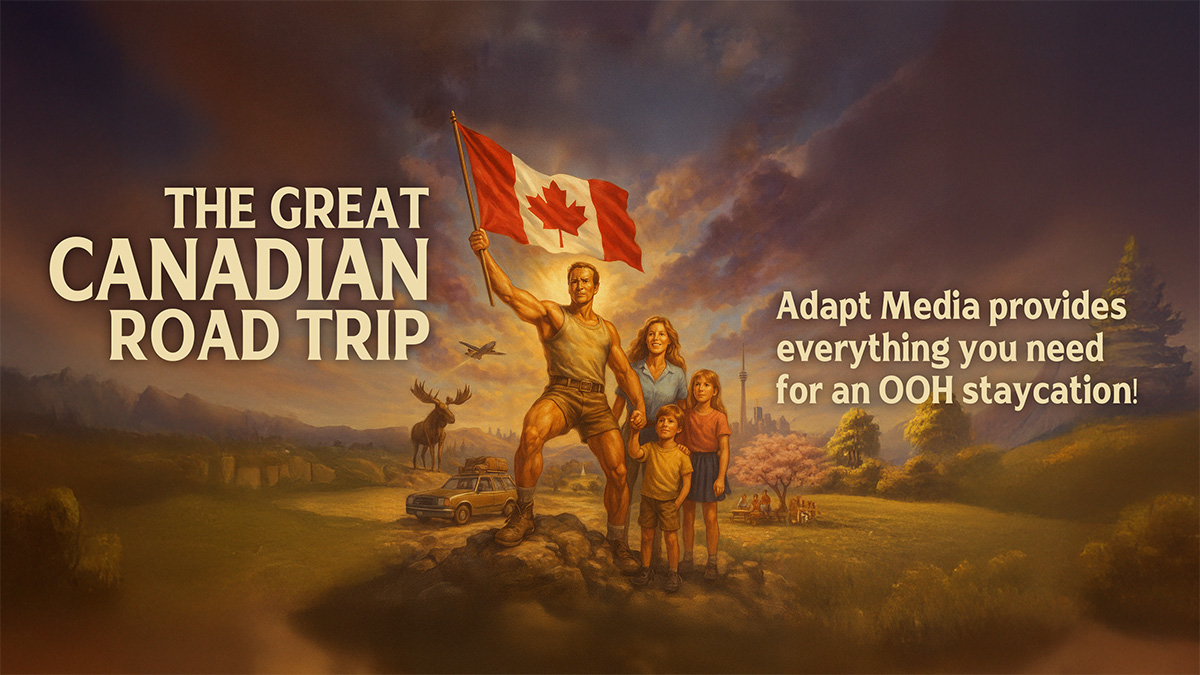Adapt Media connects your message to millions of Canadian travellers at gas stations, in convenience stores, and on mobile, reaching them where decisions are made and memories begin.
Canadian Domestic Travel Trends in 2025
More Canadians are skipping the airport and hitting the road.
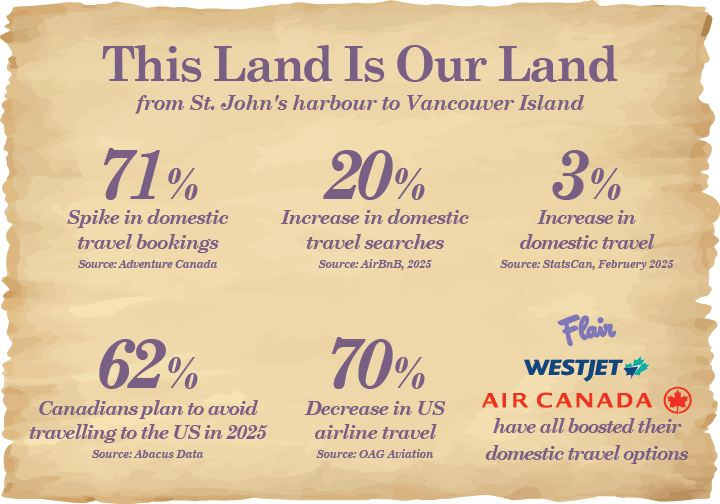
According to Airbnb, searches for domestic stays in 2025 have surged nearly 20% compared to the previous year, indicating a strong preference for exploring local destinations. Adventure Canada reports that 71% of its 2025 bookings are from Canadian travellers.
Statistics Canada notes a 3% increase in domestic travel for February 2025, nearing pre-pandemic levels, while transborder travel to the U.S. has dropped sharply. OAG reports a 70% decline in Canada–U.S. airline bookings compared to last year.
Political and economic concerns are influencing these decisions. According to Abacus Data, 62% of Canadians plan to avoid traveling to the U.S. in 2025. In response, airlines like Flair, Air Canada, and WestJet are expanding their domestic travel offerings to meet the rising demand.
For brands, this surge in Canadian domestic travel presents a golden opportunity to connect with consumers when they are most receptive—on the move.
How to Reach Road-Tripping Canadian
Adapt Media specializes in Canadian road trip marketing. Here’s how we recommend you reach Canadian travellers this year.
The Traditional Approach to Reaching Canadian Travellers
Most advertisers targeting Canadian travellers default to a narrow set of media options, such as highway billboards, radio ads, direct mail or digital campaigns geo-targeted by province. While these channels can build awareness, they often lack precision, fail to reach consumers at key decision points, and miss the moments when travellers are actually making purchases, like at gas stations, convenience stores, or local grocery stops.
Some brands attempt digital retargeting based on general location data, but the signal is often too broad, the context too vague, and the performance hard to measure. In short, most legacy media strategies are disconnected from the real-world behaviour of Canadian road-trippers.
How Adapt Media Changes the Game
Adapt Media goes beyond the highway billboard and into the heart of the road trip experience.
We place brands in high-traffic, convenience-based environments that align with how and where Canadians travel—at the gas pump, in the store, beside the snack fridge, or next to the debit terminal. These are not just impressions, they’re moments of intent and purchase opportunity.
And we don’t stop there. Adapt uses mobile retargeting to follow up with consumers after exposure, serving targeted digital ads on their mobile devices based on the real-world locations they’ve visited. This creates a powerful bridge from physical to digital, reinforcing brand recall and driving action.
No guesswork. No waste. Just campaigns that hit Canadians on the move, when and where it matters most.
National OOH Coverage Across 8,000+ Communities
Adapt Media offers unmatched reach and precision with more than 15,000 out-of-home (OOH) and digital out-of-home (DOOH) ad placements across Canada. Our network spans all major cities and extends into over 8,000 communities from Victoria to St. John’s and everywhere in between.
We focus on high-traffic, convenience-based environments along popular travel routes, including:
- Circle K
- INS Market
- Hasty Market
- Rabba Fine Foods
- Independent convenience stores and grocery stores
Exactly where road-trippers fuel up, grab snacks, and make purchases
along the way.
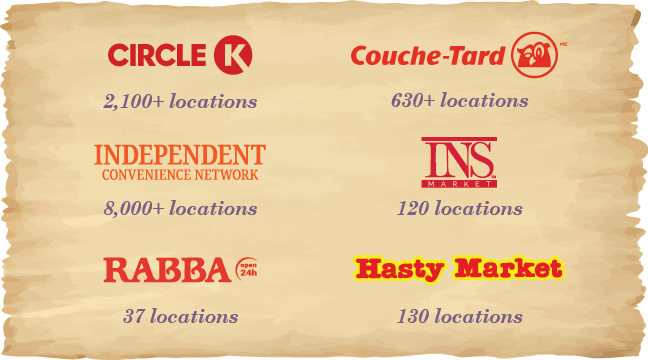
High-Impact OOH and DOOH Placements at Travel Stops
While national brands often struggle to connect with local audiences in meaningful ways, Adapt delivers both scale and resonance, ensuring your campaign feels personal, no matter the footprint.
Our placements are strategically located where consumers naturally pause during their trips, making your messaging an integral part of the travel experience itself.
Mobile Retargeting:
Go Beyond the Billboard and Extend Your Campaign Reach
What is mobile retargeting?
Mobile retargeting uses location data from mobile devices to serve follow-up ads to people exposed to physical ads. After someone passes an out-of-home (OOH) or digital out-of-home (DOOH) ad, they may later receive digital ads on their phone, tablet, desktop or Connected TV, reinforcing brand recall and boosting engagement.
How does Adapt Media use mobile retargeting
Adapt Media doesn’t just display your message—we amplify its impact through advanced mobile retargeting.
We re-engage travellers who have been exposed to your ad when they browse online, check social media, or shop later that day.
Exposure potential:
- Circle K network: 2.5 million unique mobile devices monthly
- Independent convenience store network: 2.3 million unique mobile devices monthly
- Multicultural grocery store network: 550,000 unique mobile devices monthly
- Indigenous convenience and grocery stores: 150,000 million unique mobile devices monthly
Through our ecosystem, Adapt Media can retarget virtually every Canadian’s mobile device—ensuring your OOH or DOOH ad continues to influence consumers long after they leave the store.
That is not just exposure. That is measurable performance.
What Does That Look Like in the Real World?

Picture this: a road-tripper pulls into a Circle K in Barrie on the way to Muskoka. While fuelling up and grabbing a drink, they spot a digital screen near the cash register playing an ad for a new sparkling water brand. It’s a real-world moment of purchase intent—and the brand makes its first impression.
That evening, as they scroll through Instagram at the cottage or check the news on their phone, a mobile ad for the same sparkling water appears. This time, the creative features a store locator or limited-time offer. The message is familiar, the branding consistent, and now the product feels personally relevant.
Later, they open Crave, Amazon or YouTube on their Connected TV. Just before their show begins, they see a 15-second pre-roll ad—same brand, same message. From convenience store to mobile to television, the campaign stays with them. That’s an omnichannel journey done right.
This is how Adapt Media extends the life of a campaign. From an in-store screen to a mobile ad to a Connected TV spot, we deliver consistent messaging that moves with the consumer throughout the day. Each touchpoint reinforces the last, building familiarity and driving recall.
It’s more than brand awareness. It’s layered brand presence. And it starts with a strategically placed Adapt Media screen.
The next day, they stop at another Circle K on the drive home. Once again, they encounter the brand, this time through prominent in-store signage. The campaign comes full circle. What began as a passive impression becomes a reinforced brand experience, strengthened by consistent multi-touch messaging that keeps the product top of mind and drives future consideration.
Best OOH Advertising Locations in Canada
to Capture Canadian Travellers – Top Travel Corridors in Canada
Our network saturates Canada’s most travelled corridors. Here are a few prime examples of where Canadians spend their time on the roads:
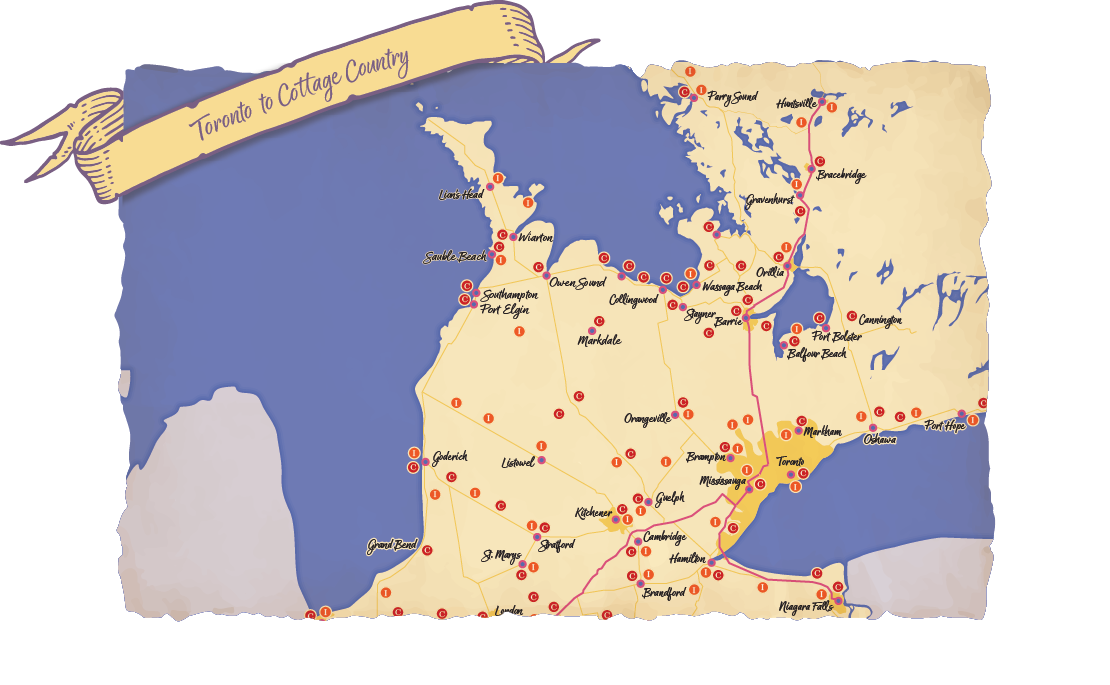
Over 500,000 Vehicles a Day in Summer
Highway 400 funnels more than 500,000 vehicles daily during peak summer weekends, making it one of Ontario’s busiest and most valuable routes for brands targeting vacationing families and weekenders 1.
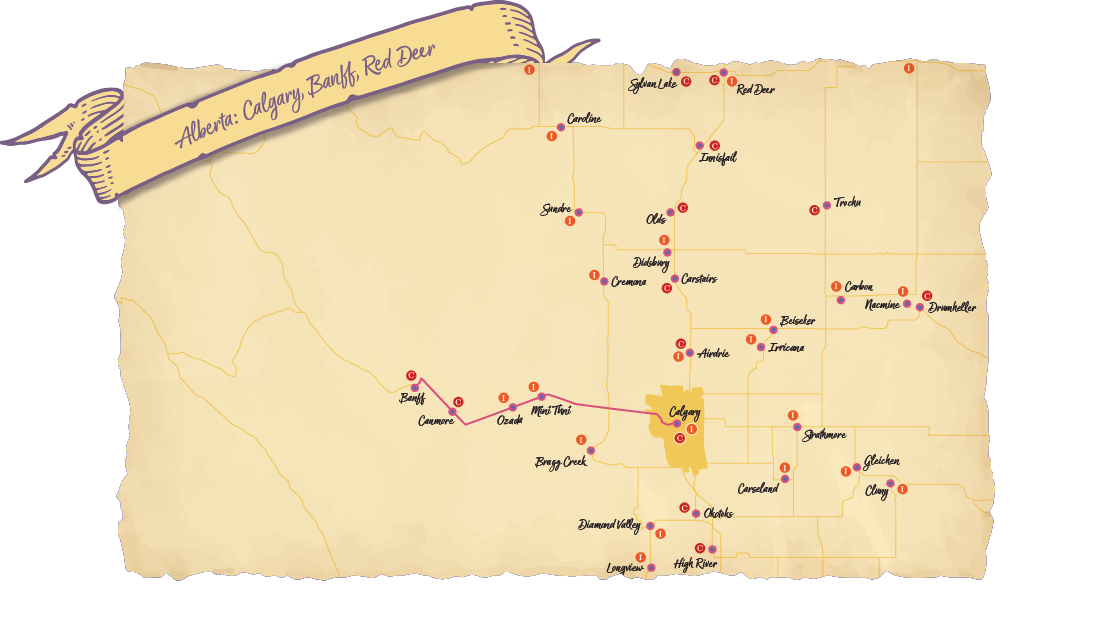
170,000 Vehicles per Day
170,000+ vehicles passing through daily near Calgary, the Highway 1 and 2 corridors are among the most travelled in Alberta, offering unmatched reach to both mountain-bound tourists and regional commuters 2.
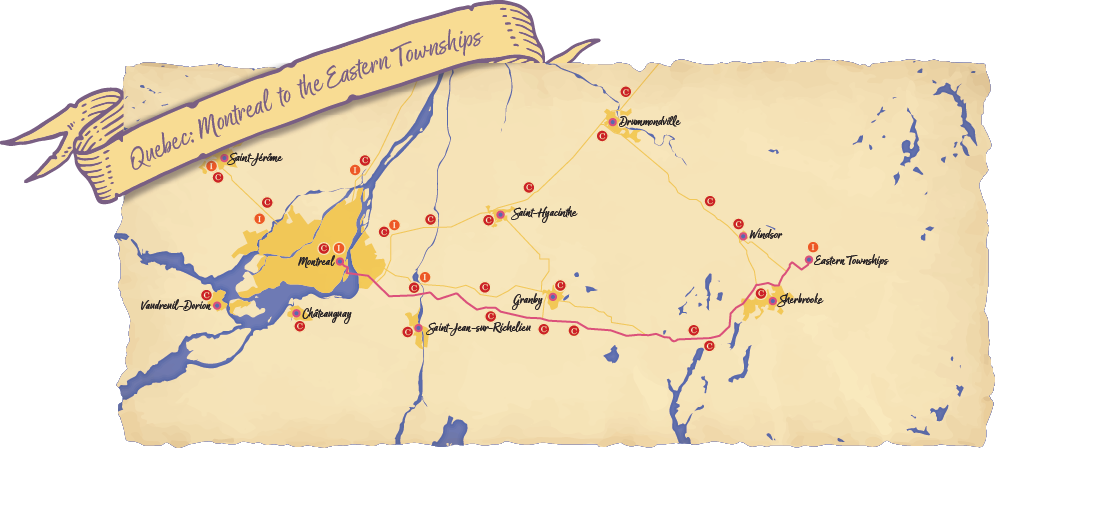
Heavy Leisure Travel on Autoroute 10
Autoroute 10 (Eastern Townships Expressway) is a key route linking Montreal to popular destinations like Bromont, Magog, and Sherbrooke. It sees heavy traffic from both daily commuters and weekend travellers heading to ski hills, lakes, and resorts, making it a high-opportunity corridor for brands looking to engage Quebec consumers in motion 3.
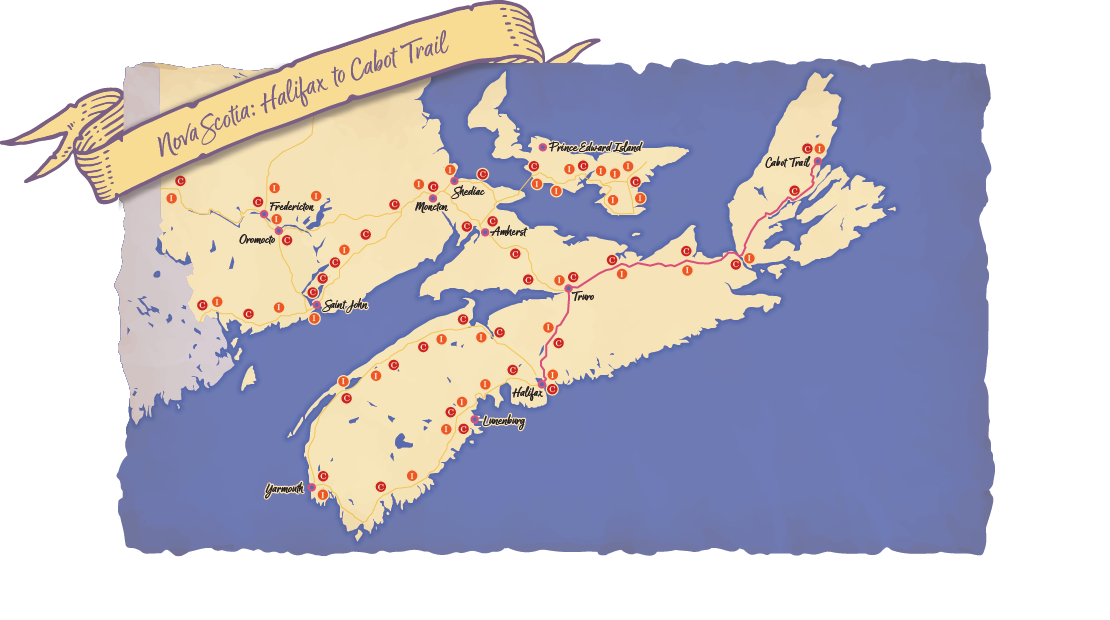
Nova Scotia’s Top Scenic Drive Draws Seasonal Swells
Traffic to the Cabot Trail jumps sharply in summer and fall, with tourists flocking to one of Canada’s most scenic drives, creating a high-impact window for regional and national brands 4.
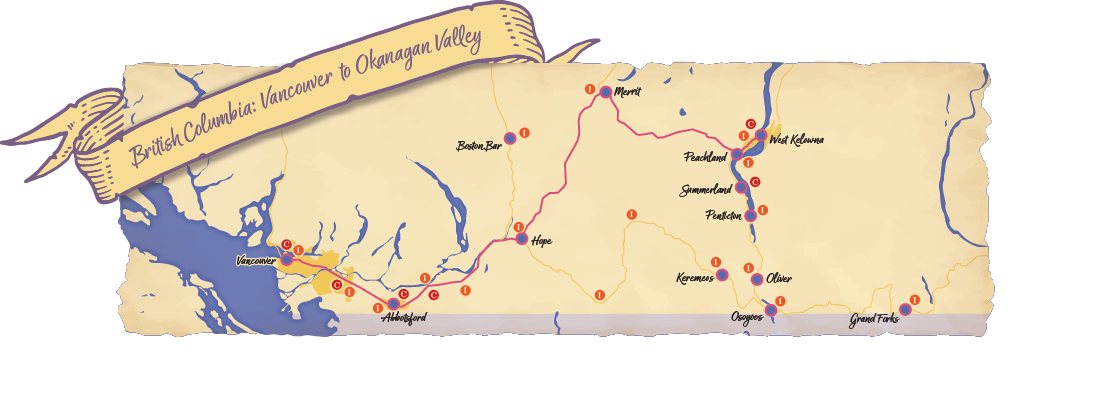
BC’s Wine Trail with Summer Traffic Surges
The Highway 1/97 corridor connecting Vancouver to the Okanagan Valley sees a massive summer spike in traffic, as thousands of travellers head to wine country, lakes, and festivals, prime time for high-visibility campaigns 5.
2025 Canadian Travel by the Numbers
Canadian travel habits are shifting fast. These statistics highlight how and where Canadians are choosing to travel in 2025, revealing high-value opportunities for brands to engage with consumers while they’re on the move.
44%
Intend to travel to provinces
outside their own 6
38%
Plan to explore within
their home province 7
14%
Increase in domestic
travel in 2025 8
57%
Intend to travel to provinces
outside their own 9
74%
Canadians planned to
vacation within Canada 10
45%
Increase in KM’s driven
during summer months 11
14%
Increase in Pet-friendly
travel in Canada 12
Why Convenience Store OOH and DOOH Advertising Works
In a digitally saturated world, consumers are tuning out online ads, but still paying attention to well-placed real-world media. Convenience store based out-of-home (OOH) and digital out-of-home (DOOH) placements at gas stations, grocery stores, and convenience stores cut through the noise, capturing attention and influencing behaviour at the moment it matters most.
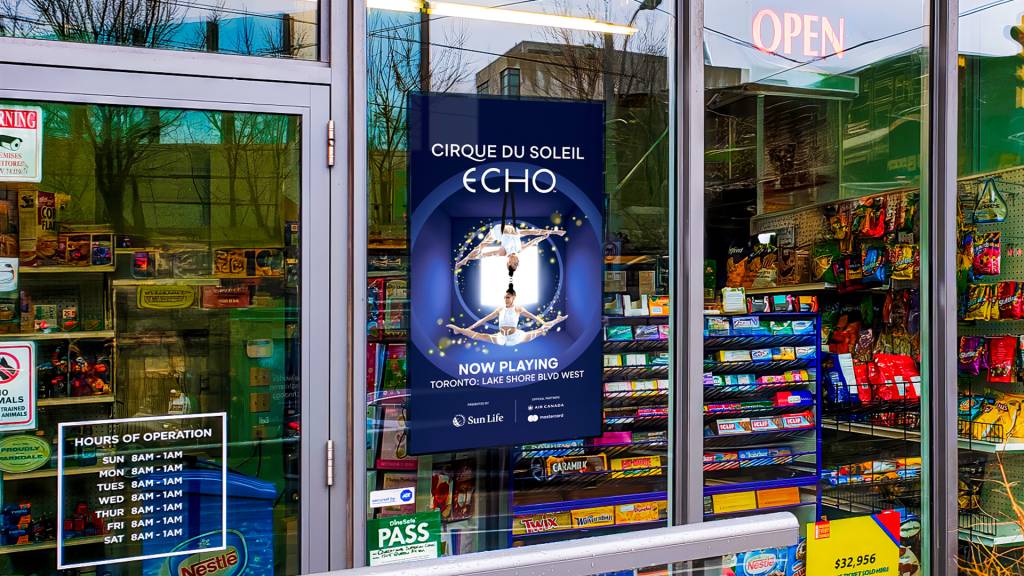
78%
of Canadians Pay Attention to OOH Ads
According to COMMB Insights, nearly 8 in 10 Canadians actively notice out-of-home advertising. Unlike digital banner ads that are often ignored or blocked, DOOH formats are integrated into the real world—at eye level, in places where people are already looking. This high visibility makes DOOH ideal for building brand recognition and increasing recall across diverse audience groups.
57%
of Canadians See an OOH Ad Every Week
Out-of-home advertising continues to deliver unmatched reach in the physical world. According to Media in Canada, over half of Canadians encounter at least one OOH ad weekly—proof that despite the rise of digital media, outdoor advertising remains a vital channel for visibility. Whether at gas stations, convenience stores, or in transit, these formats capture real-world attention at scale and stay top of mind long after exposure.
66%
of Smartphone Users Take Action After Seeing an OOH Ad
DOOH isn’t just about awareness, it drives action. A study by OAAA found that 66% of smartphone users take some form of action after seeing an DOOH ad, including searches, website visits, and social engagement. When placed near purchase locations like convenience stores and gas stations, these ads become powerful nudges, converting attention into measurable consumer behavior.
1 in 4 Gen Z
Consumers Make a Purchase After Exposure
Vividata research shows that Gen Z is particularly responsive to D/OOH media—more than 25% of them make a purchase after seeing an D/OOH ad. This demographic expects brands to be part of their real-world experience, not just their digital feed. Ads placed at high-traffic convenience locations tap into Gen Z’s impulsive buying behavior, especially when paired with mobile retargeting.
Why Convenience Locations Outperform
Gas stations, grocery stores, and convenience stores are not just high-footfall locations, they are decision points. Shoppers are in a buying mindset, making last-minute choices and open to product discovery. By combining physical visibility in these spaces with mobile retargeting, Adapt Media delivers a full-funnel solution that engages, influences, and converts.
Convenience store, gas station, and grocery store placements are especially powerful because they reach travellers at trusted, familiar stops where purchase decisions are already being made.
By combining physical visibility with mobile retargeting, Adapt Media makes it possible for brands to achieve full-funnel impact across the consumer journey.
Download Our Canadian Travel Map for Smarter Media Planning
To help agencies and brands plan more targeted campaigns, Adapt Media has created a downloadable 2-sided Canadian Travel Map.
– Side A: National map showing major highways and Adapt-covered cities
– Side B: Regional detail of popular corridors like Toronto–Muskoka, Vancouver–Kelowna, and Halifax–Cabot Trail

